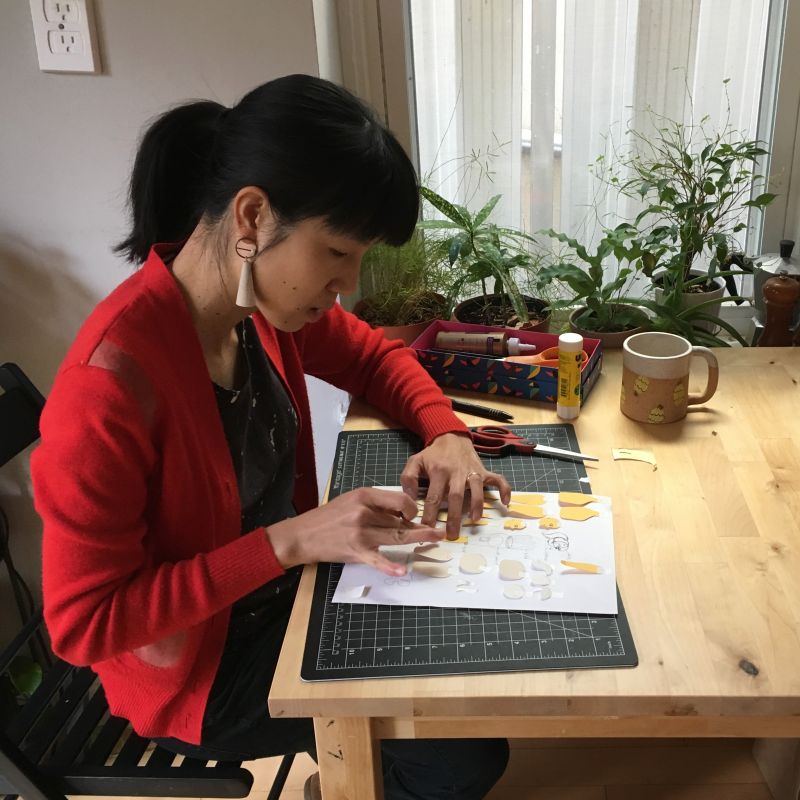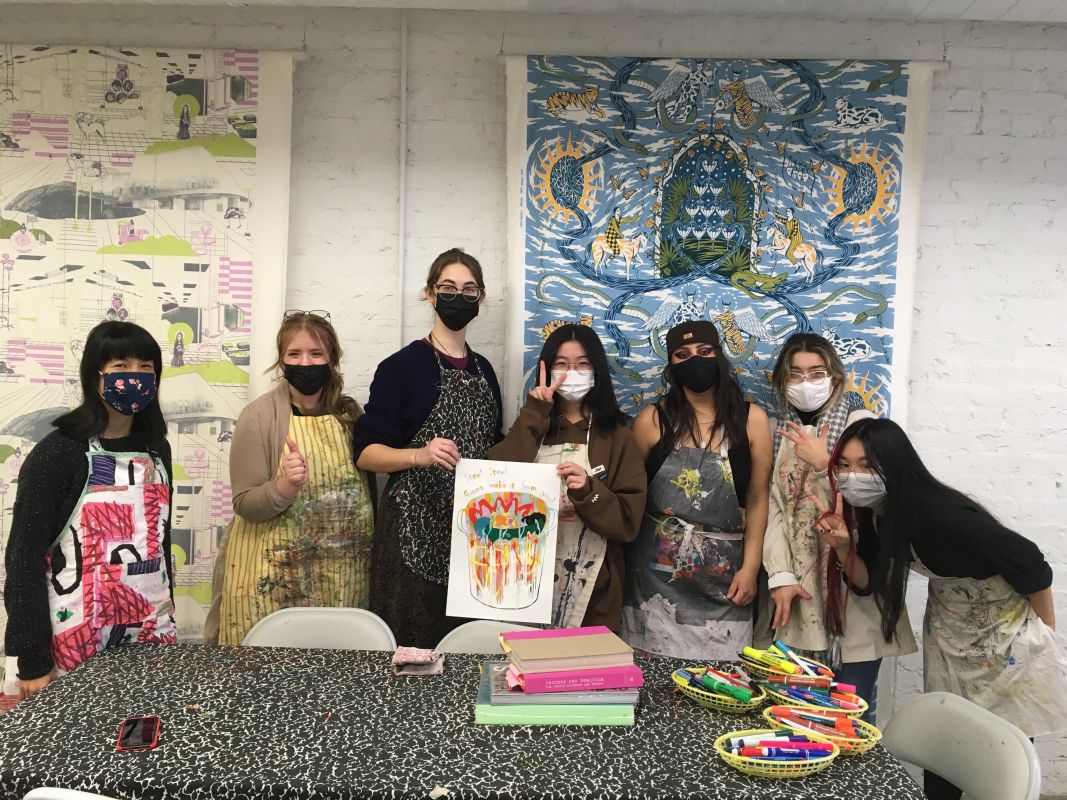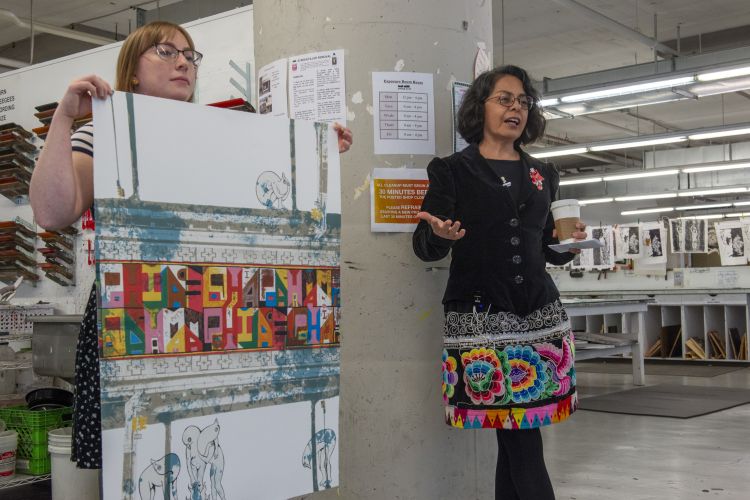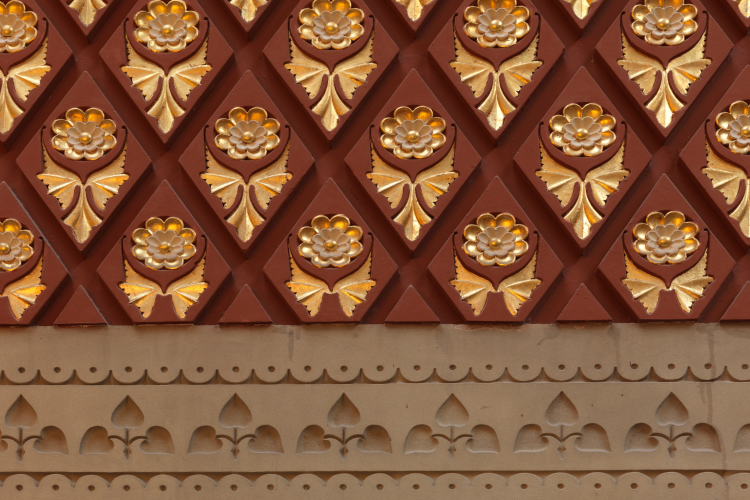STORIES FROM PAFA
Animation Chair Amy Lee Ketchum on Building a Dream Program
When she began her position as PAFA’s chair of animation in 2019, Amy Lee Ketchum found herself with the unique opportunity to build a program in which students follow their interests and emerge able to make a career of those interests, no matter the field.
“I got to envision ‘What is my dream school?’ based on my experience in the industry, and as an artist and independent film maker,” says Lee Ketchum. “What do I want to share with the world?”
Animation Facilities
Only a few years after getting off the ground, and with its first cohort set to graduate in 2023, PAFA’s animation department is flourishing. A professional-grade sound studio recently joined its list of dedicated facilities, which also includes the Albert M. Greenfield Animation Studios, two stop-motion studios and a digital lab filled with iMacs and Cintiq drawing tablets.
Career Paths
The department’s success will further emerge as graduates enter the workforce. Lee Ketchum aims to prepare her students for what she describes as three of the many branches of animation—independent film making, commercial animation, and fine art related to the moving image—and how to fit them together into infinite career paths. Her own experience in these fields is vast, encompassing gallery exhibitions, film festivals, commissions for corporate and nonprofit clients, cross-genre collaborations, and more.
The confluence of these approaches is what sets the school apart from its peer institutions, says Lee Ketchum.
“If you want to be a fine artist, this is a place for you. If you want to be a commercial artist, this is also a place for you,” she says.
Curriculum
Notable in PAFA's animation curriculum is the chance to gain industry-oriented experience while still a student. The course Motion for Industry connects students work with a real client to pitch ideas, receive feedback, meet deadlines, and complete work for market. “We’re going to tell you what the landscape of the industry is like and what you need to do to prepare for it,” says Lee Ketchum. Last semester, students delivered work for chemical manufacturer FMC to showcase the company’s net zero environmental goals. Of course, Amy emphasizes this course comes after students receive a traditional foundational knowledge, building skills from many other departments across the school.
In their first year, every animation student studies figure drawing, sculpture, digital media, painting, and a first-year course that introduces them to the arts in Philadelphia and PAFA’s role in its history. These foundations improve their understanding of animation: figure drawing teaches how bodies move and are constructed; sculpture helps one understand that all things, even 2-D images, have volume; mastering perspective is vital to how characters interact in a space. “For example, if you want to be an amazing background painter, you can work with Al Gury, Jill Rupinski, or Peter van Dyck. There’s all this knowledge at PAFA and you can bring it into your animation,” says Lee Ketchum.
Student Centered
As a newer major, Lee Ketchum sees animation as unique within the walls of PAFA as well. “We’re able to pivot to students’ interests. I’m really listening to their needs. If students are super into 2-D animation, I’m going to give them more opportunities to learn that or bring in a specialist to lead a deeper dive.”
This student-centered approach is steeped in the history of moving imagery at PAFA, reaching back to famed alums David Lynch, who created his first motion-based work at the school, and Mary Ellen Bute, who went on to create innovative films using an oscilloscope. Today’s animators study these alongside other experimental narratives in a new course Lee Ketchum is particularly excited to teach this fall, called Alternative Cinematic Structures.
“I'm trying to help students become strong visual storytellers who can tell stories in refreshing ways,” she says of her ultimate goals as the department continues to grow. “Then go pave your own path!”
—Diana Wensley, content writer





